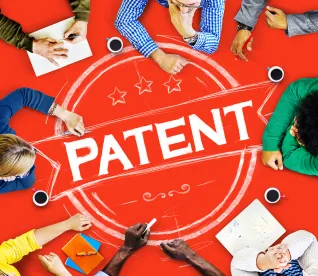In fact, it was Clear-Vu that got “schooled” in the law of obviousness, but this case would be a good teaching—or review—article for anyone on this subject. I admit, it was refreshing to re-read some of the classic quotes from Fed. Cir. panels that set the standards for s. 103 inquiries. I know that patent eligibility and even s. 112(1) are the hot topics of the day. This decision by Judges Reyna, Cleavinger and Stoll (writing) felt like encountering the ghost of s. 103 past—when the entire IP world seemed like a friendlier place.
In University of Strathclyde v. Clear-Vu Lighting LLC, Appeal No. 2020-2243 (Fed. Cir., November 4, 2021), the PTAB had invalidated the claims-in-suit of U.S. Pat. No. 9,839,706 as obvious in view of the combined teachings of two related papers, “Ashkenazi” and “Nitzan.” The judge ruled that the references provided a reasonable expectation of success in practicing the claimed invention. The panel failed to find a factual basis for both of these rulings.
The claims of the ‘706 patent are relatively straightforward, and are directed to a method to inactivate methicillin-resistant S. aureus and two other species ex-vivo by exposing them to visible light having a wavelength of 400-420 nm, without exposing them to a photosensitizer. The problem with the cited art, inter alia, is that it simply did not disclose all of the claim elements. A lot of the opinion is an explanation of the differences between the art and the patent claims.
Briefly, it notes that the references that allegedly disclose the claims all used photosensitizers such as porphyrins. Ashkenazi increased the vivo porphyrin concentration in the species, P. acnes, by treating the cells with gamma-aminolevulinic acid, ALA, itself a photosensitizer. Ashkenazi even used a culture media that contained riboflavin, another photosensitizer. Nitzan studied ALA MRSA cultures, some of which did not contain ALA or porphyrins. This sounds like pretty good art, but the parties agreed that it was not anticipatory. What was important to the panel was that Nitzan reported no decrease in viability of the cells after illumination with 50 J/cm2 of 407-420 nm blue light.
The panel went right to work with the black letter law:
“Whether the prior art discloses a claim limitation, whether the skilled artisan would have been motivated to modify or combine teachings in the prior art, and whether she would have a reasonable expectation of success in doing so are questions of fact,” citing University of California v Broad Inst., 903 F.3d 1286, 1291 (Fed. Cir., 2018). The panel reviewed the facts summarized above and concluded that “[w]e see nothing in Ashkenazi that discloses or suggests inactivating P. acnes or any other bacteria without using a photosensitizer.” The panel went on to find that Nitzan failed to observe “inactivation” as required by the claims [emphasis supplied]. The panel stated that it “failed to see why a skilled artisan would opt to entirely omit a photosensitizer when combining these references … We decline Clear-Vu’s invitation to read the inactivation limitation in isolation, divorced from the claim as a whole” [citing ATD Corp v. Lyndall, “‘Obviousness cannot be based on the hindsight combination of components selectively culled from the prior art to fit the parameters of the patented invention.'”].
This post is long enough, but one statement of the law of obviousness deserves a nod. It is the long discussion off OSI Pharmaceuticals, which examined the utility of a drug to treat NSCLC. The present panel agreed that “given the [high] ‘failure rate’ and lack of ‘data or any other reliable indicator of success,’ we found that ‘the only reasonable expectation at the time of the invention was failure not success.’” The icing on this rich cake is the panel’s rejection of the PTAB’s attempt to use the teaching of the ‘409 patent to bolster its expectation of success conclusion. The patent simply stated that “[t] he inventor’s own path itself never leads to a conclusion of obviousness; that is hindsight … We do not hold that ‘absolute predictability’ or ‘guaranteed success’ is required to find a reasonable expectation of success”. Words to cherish. Words to prosecute by.


 />i
/>i

